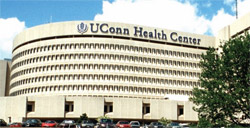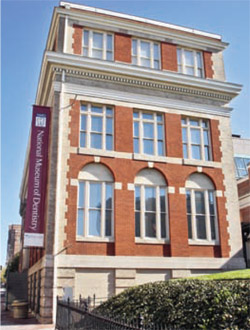Dental Insider
Study of Minority NYC Youth Finds Unequal Burden of Poor Dental Health
Hispanic youth report better dental health habits than their non-Hispanic peers, according to a study of low-income New York City adolescents reported in the November Journal of Health Care for the Poor and Underserved.1
The study provides added insight into the oral health of the diverse Hispanic community in America, said study co-author Luisa Borrell, a dentist and epidemiologist, who is also an assistant professor of epidemiology with Columbia University’s Mailman School of Public Health.
The Columbia University study is a snapshot of more than 3,200 children ages 12 to 16, who live in the northern Manhattan communities of Central Harlem and Washington Heights/Inwood. Ninety-four percent of the youth were Hispanic or black. More then 2,300 youth identified themselves as Hispanic and the greatest number of the Hispanic adolescents were of Dominican descent, Borrell said.
“The study provides important information on oral health for a Hispanic subgroup other than Mexican Americans, from whom we have recent national data. Studies focusing on other Hispanic subgroups will help us understand the difference within the Hispanic population and will underscore the need to examine health outcomes for each Hispanic subgroup whenever the data is available,” Borrell said.
In most national studies of children’s oral health, the data on Hispanics largely reflects Mexican-American youth.
The Columbia University study relied on questionnaires filled out by the youth and clinical exams performed during each child’s visit to a school-based dental clinic. Researchers found cavities in 52% of the Hispanic participants and 54% of the black youth.
“This study may help us define the problem. We still have a lot to learn about what factors are protective for the oral health of these kids, and what will work to improve that health,” Borrell said.
Overall, the dental health and health-promoting habits of the Hispanic children were better than the other participants in the study were. Ninety-four percent of Hispanic youths reported that they brush daily compared with 83% of blacks and 85% of the other children in the study. Hispanic youths were also more likely to floss.
Many more Hispanic youths reported having had a dental visit sometime in their lifetime. Researchers noted moderate-to-abundant plaque in 27% of the Hispanic adolescents, compared with 36% of blacks and other children in the study.
“The study’s findings need to be interpreted with caution, as we did not have information on the education and income of the adolescent participants’ families. Also we didn’t know what proportion of these children were foreign born, which can be a protective effect for health,” Borrell said.
Mario Ramos, a dentist with Pediatric Dentistry of Midland Park, New Jersey, founded an organization to provide dental care to homeless children. Although not involved with the current study, he said the new findings are not a surprise.
“Being poor and a parent’s education level are huge factors in dental health. We know that 80% of the dental decay in America in kids is in 20% of the kids,” Ramos said.
References
1. Mitchell DA, Borrell LN, Lassiter SL, Formicola AJ. The oral health status of adolescents in northern Manhattan. J Health Care Poor Underserved. 2007;18(4):814-832. 
The Center for Research and Education in Technology Evaluation (CRETE) has announced the creation of a model state-of-the-art dental innovation center that will bring the most current services, technologies, equipment, and products to dental education. The practice-oriented education and continuing education facility, to be housed at the University of Connecticut School of Dental Medicine, will be the first such center in the country developed through a partnership between the dental industry and a dental school. The CRETE Innovation Center will be constructed to allow equipment and products to be easily changed as new technologies are developed and readied for evaluation in a practice setting. The Center will be administered by a board composed of representatives from the dental industry, the dental school faculty, and dental students. The board will have oversight of all operations and management.
CRETE is actively seeking partners to assist in the creation of the Innovation Center by donating products, funding, or expertise through participation on the Planning Board. To learn more and find out how to participate, contact Dr. Ed Rossomando at 860-679-2622 or erossomando@uchc.edu.

The Dr. Samuel D. Harris National Museum of Dentistry has launched a new committee to give allied dental professionals the opportunity to have a personal working relationship with NMD. The National Allied Advisory Committee, chaired by Ann Battrell, RDH, MSDH, (Ex-ecutive Director of the American Dental Hygienists’ Association and a member of NMD’s Board of Visitors) will support NMD in its mission to educate the public about the importance of oral health in overall heath.
“I’m looking forward to working with these outstanding dental hygienists as committee members to promote NMD and its goals on a national level,” said NAAC Chair Ann Battrell, RDH, MSDH. “We will be raising awareness of and support for both NMD’s national membership program and outreach activities. Dental hygienists play a key role in promoting the importance of oral health as part of total health. We look forward to working with NMD to promote the importance of oral health in communities across the country.”
The newly formed NAAC will be composed of two allied dental professionals representing each state, and NAAC members will work with the Museum to promote programs:
• On site—Innovative exhibitions, educational tours, and family programs
• Online—MouthPower shares the power of a healthy smile with children across the country through an entertaining and educational Web experience, now available in English and Spanish at www.MouthPower.org.
• Across the Country—NMD’s traveling exhibition program has reached more than 2 million people in 21 states, inspiring visitors of all ages to keep their smiles bright and healthy.
For more information, call 410-706-0600 or go to www.dentalmuseum.org.
To submit an item for consideration for Industry Insiders, e-mail lsass@aegiscomm.com. Items will be selected based on space.



